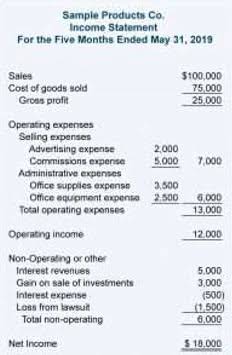Financial Analysis and Interpretation: Horizontal Analysis HKT Consultant

Look for major fluctuations that may indicate critical events or shifts in the company’s operations. For example, a $1 million increase in General Motors’ cash balance is likely to represent a much smaller percentage increase than a corresponding $1 million increase in American Motors’ cash balance. Either the data of the rest of the years is expressed as a percentage of the base year or an absolute comparison is performed. The significance of the various increases and decreases in the revenue and expense items should be https://www.bookstime.com/ investigated to see if operations could be further improved. For example, the increase in utilities expense of 38.9% was the result of renting additional office space for use by a part-time law student in performing paralegal services.
- Looking to streamline your business financial modeling process with a prebuilt customizable template?
- The horizontal analysis evaluates trends Year over Year (YoY) or Quarter over Quarter (QoQ).
- This method can be applied to assess a company’s financial standing and assist investors in making defensible investment choices.
- When data is simplified into clear side-by-side comparisons, businesses can find trends and make informed decisions easier.
- The horizontal analysis of cash flows for Apple Inc. indicates an increase in cash flows from operating activities of 101.8%, which is a favorable trend.
- Costs rising faster than revenue may be a red flag that you’ll want to address.
Step 1 of 3

Horizontal analysis can help evaluate a company’s financial standing or position vis-à-vis its competitors. On the other hand, vertical analysis, also known as common size analysis, involves analyzing financial statements by expressing each line item as a percentage of a base figure. The base figure can be either total assets for the balance sheet or total revenue retained earnings balance sheet for the income statement.

Key takeaways

For example, if a company starts generating low profits in a particular year, expenses can be analyzed for that year. This makes it easier to spot inefficiencies and specific areas of underperformance. There were rises of more than 12% in all categories of property other than transport equipment.
AccountingTools

An alternative format is to add as many years as will fit on the page, without showing a variance, so that you horizontal analysis formula can see general changes by account over multiple years. A less-used format is to include a vertical analysis of each year in the report, so that each year shows each line item as a percentage of the total assets in that year. While horizontal analysis is primarily used for financial data, it can also be applied to non-financial data to identify trends and patterns. Horizontal analysis and vertical analysis are two common methods of analyzing financial statements.
- By combining horizontal analysis with tools like FP&A software and scenario planning, companies can make decisions that are not just reactive but also forward-thinking.
- We need to perform a horizontal analysis of the income statement of this company.
- Through horizontal analysis, we can observe that while the absolute increase in net income remained the same ($20,000), the rate of growth slowed down in the third year compared to the second year.
- Depending on the metrics you want to focus on, you will need different financial statements, like balance sheets, income statements, or cash-flow statements.
- By leveraging the insights gained from horizontal analysis, businesses can make informed decisions, mitigate risks, and drive sustainable growth.
- Similarly, a company facing economic headwinds might show declining figures, but a closer look could reveal that it is outperforming its peers under the same conditions.
Misinterpreting Data
It also indicates the behavior of revenues, expenses, and other line items of financial statements over the course of time. Secondly, in the second type of horizontal analysis, we are interested in knowing about the underlying trends in the line items of the income statement. For this, we compare the absolute change ($) and percentage change (%) in all the line items from one period to the other. One should ideally take three or more accounting periods/years to identify trends and how a company is performing from one year/accounting period to the next year/accounting period.
